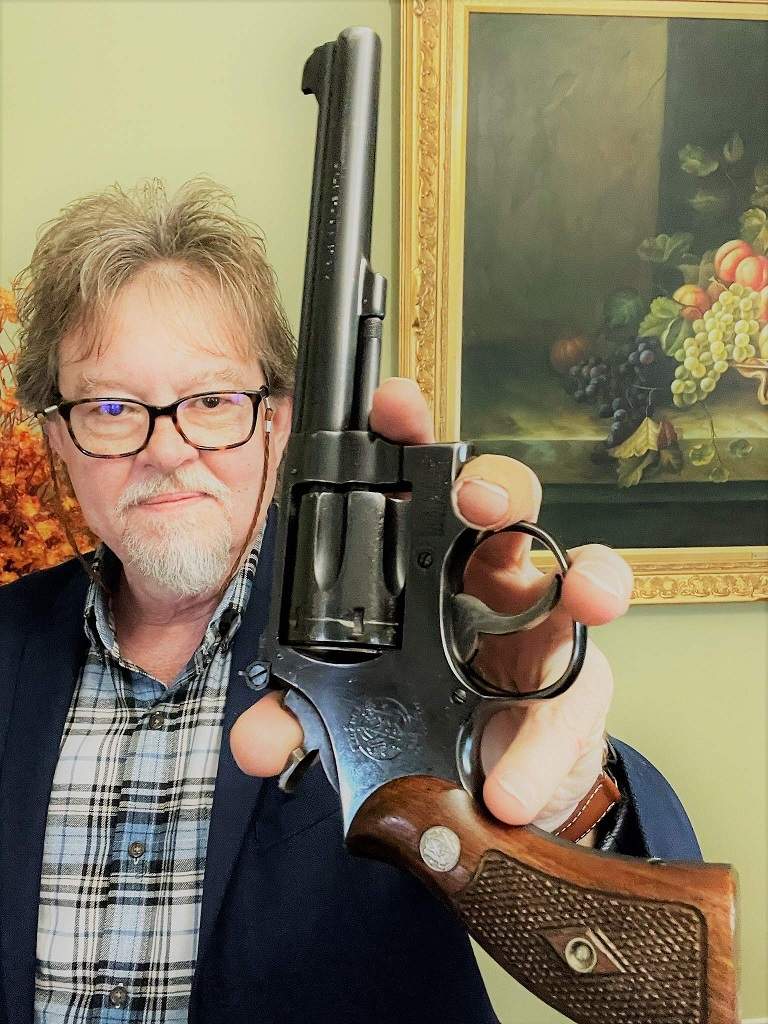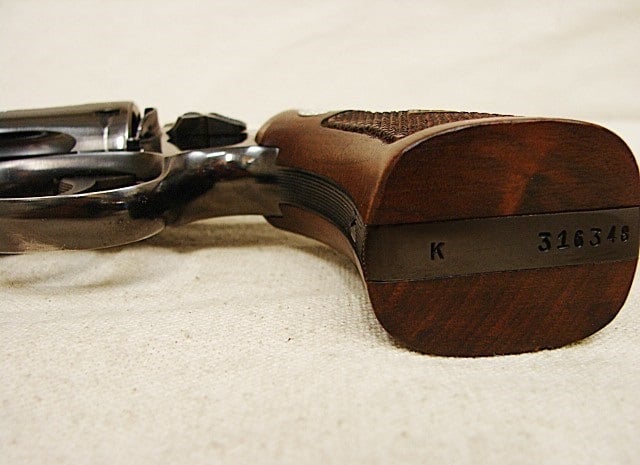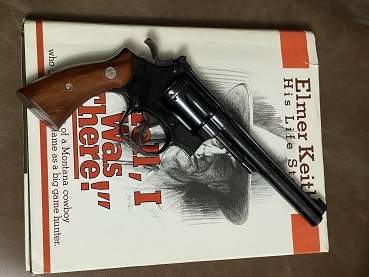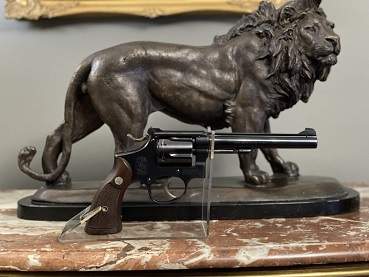-
1946
This was the first production K-22 Masterpiece completed in 1946 and was used by the factory to showcase their K-22 line of revolvers.
-
1948
Looking at the Serial Number Table, one would surmise that Smith & Wesson turned out more of the third model, post war, pre-model 17 guns in 1948...
-
1953
Only another gun enthusiast could understand the passion that can overtake you when that one gun comes along. Oh boy! It can take you by surprise...
-
1960
So what was the change that precipitated the dash one designation? The modification was changing the ejector rod from right hand to left hand thread...
Here, you can identify the year of your 3rd Model gun by the serial number. Production began in December 1946.
S&W Serial Number Table
Post-War S&W K-22 Masterpiece Pre-17
The First Model K-22 was named the Outdoorsman and was produced 1931-1939. The name was changed to Masterpiece with the Second Model in 1940, but less than 1,100 Second Models were made when all production ceased due to the war. After the war ended, production of the Third Model K-22 Masterpiece began in 1946 and lasted until 1957. My gun is Serial Number K316348, making it one of the last Pre-17s produced (see serial number table). And although I don't have a letter yet, I'm sure it shipped in 1958.
You don't name a gun Masterpiece and not back it up with beauty, grace and workmanship. Smith & Wesson went beyond backing up the claim, "no brag, just fact." A real thing of beauty.... says the guy who collects mostly Colts. If you don't understand my excitement over this old .22, well you might as well just click on over to the semi-autos or long guns, because you can't love revolvers and not have an appreciation for this one.

Seller's Description: S&W model K22 .22LR revolver with a 6" barrel and factory Gold Box. Blue condition is a shiny 93% with a couple of blue loss spots and holster wear at the muzzle, and some handling marks on the frame and cylinder. Bore is excellent, as well as the diamond grips. Features pinned barrel, recessed cylinder, ribbed grip and top strap, S&W diamond grips, adjustable rear sight, and patridge front sight. The seller also stated, "the serial number dates it to 1957, but S&W started stamping the model 17 number on these in 1957, and there is no model 17 stamp on this one."





